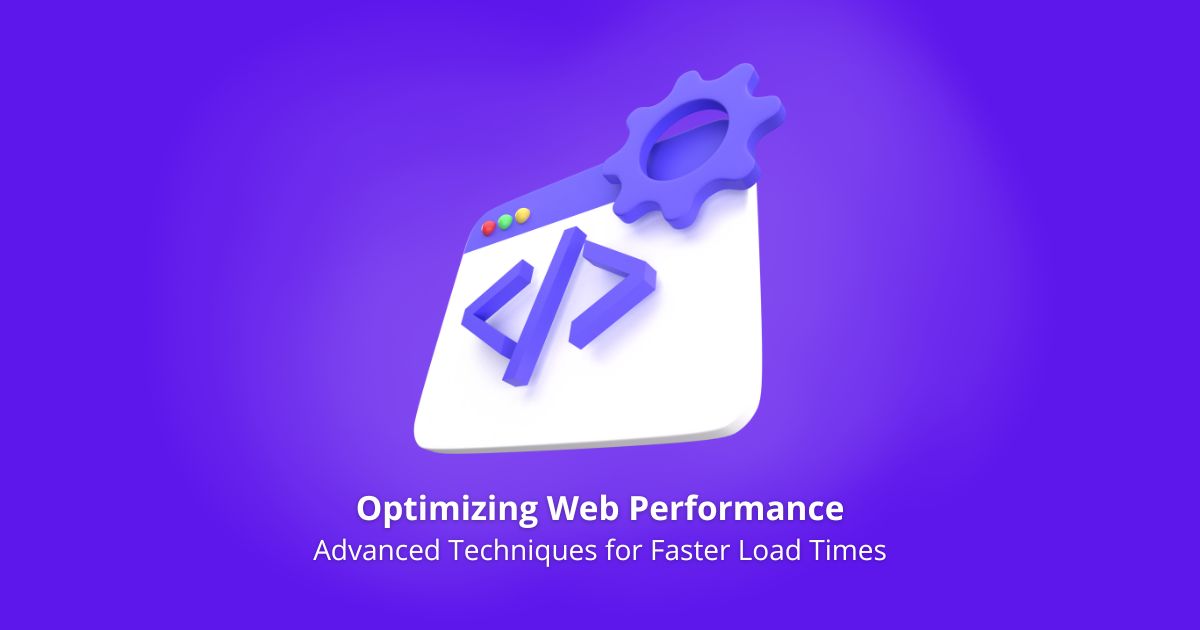In today’s digital landscape, a fast-loading website is crucial for retaining visitors and ensuring a positive user experience. Slow websites can frustrate users, leading them to abandon your site and seek information or services elsewhere. This article explores advanced web performance optimization techniques to help you achieve faster load times, benefiting both your users and your search engine rankings.

Understanding Web Performance Optimization
Web performance optimization involves enhancing the speed and efficiency of your website, ensuring that pages load quickly and smoothly. This process not only improves user satisfaction but also contributes to better search engine visibility. By implementing advanced web performance techniques, you can reduce bounce rates, increase engagement, and improve conversion rates.
Key Metrics to Monitor
Before diving into optimization strategies, it’s essential to understand the metrics that gauge your website’s performance:
-
First Contentful Paint (FCP): Measures the time it takes for the first piece of content to appear on the screen.
-
Largest Contentful Paint (LCP): Tracks the time until the largest content element becomes visible.
-
Cumulative Layout Shift (CLS): Assesses the visual stability by measuring unexpected layout shifts.
-
Time to Interactive (TTI): Indicates when the page becomes fully interactive for the user.
Monitoring these metrics provides insights into areas needing improvement.
Advanced Techniques for Web Performance Optimization
1. Implement Lazy Loading
Lazy loading defers the loading of non-essential resources, such as images and videos, until they are needed. This approach reduces initial page load time and conserves bandwidth. By loading media content only when it enters the viewport, you enhance the user experience, especially on pages with extensive multimedia content.
2. Utilize Content Delivery Networks (CDNs)
A CDN distributes your website’s static assets across multiple servers worldwide. When a user accesses your site, the CDN serves content from the server closest to their location, reducing latency and improving load times. Implementing a CDN is particularly beneficial for websites with a global audience.
3. Optimize Image Sizes and Formats
Large, unoptimized images can significantly slow down your website. Compress images to reduce file sizes without compromising quality. Additionally, use modern image formats like WebP, which offer superior compression and quality characteristics compared to traditional formats like JPEG and PNG.
4. Minify and Combine Files
Minification involves removing unnecessary characters from code files (JavaScript, CSS, HTML) without affecting functionality. Combining multiple files into one reduces the number of HTTP requests, leading to faster load times. Tools and build processes can automate these optimizations, ensuring your codebase remains efficient.
5. Enable Browser Caching
Browser caching stores static files on a user’s device, allowing subsequent visits to load faster. By setting appropriate cache headers, you instruct browsers to reuse resources instead of fetching them anew each time. This practice reduces server load and enhances user experience for returning visitors.
6. Implement Code Splitting
Code splitting involves breaking down large JavaScript bundles into smaller chunks that load on demand. This technique ensures that users download only the necessary code for the current page, reducing initial load times and improving performance, especially for complex applications.
7. Optimize Third-Party Scripts
Third-party scripts, such as analytics tools and ads, can introduce performance bottlenecks. Regularly audit these scripts to assess their impact on load times. Remove unnecessary scripts and consider loading essential ones asynchronously to prevent them from blocking the rendering of your page.
8. Use HTTP/2 Protocol
Upgrading your server to support HTTP/2 can enhance performance through features like multiplexing, header compression, and server push. HTTP/2 allows multiple requests and responses to be sent simultaneously over a single connection, reducing latency and improving load times.
9. Prioritize Critical CSS
Critical CSS refers to the styles required to render the above-the-fold content of your page. By inlining these styles directly into the HTML, you can reduce render-blocking resources and speed up the initial display of your website. Non-critical CSS can be loaded asynchronously to avoid delaying page rendering.
10. Monitor and Optimize Server Performance
Your server’s performance plays a vital role in your website’s speed. Regularly monitor server response times and optimize database queries. Consider implementing server-side caching solutions and load balancers to distribute traffic efficiently, ensuring your server can handle high volumes of requests without degradation in performance.
Conclusion
Achieving optimal web performance requires a multifaceted approach, combining various techniques to address different aspects of your website’s functionality. By implementing these advanced web performance optimization strategies, you can ensure faster load times, improved user experience, and better search engine rankings. Remember, ongoing monitoring and optimization are key to maintaining peak performance in the ever-evolving digital landscape.
For professional assistance in enhancing your website’s performance, consider consulting with experts like OWDT creative web design agency, who specialize in creating optimized and user-friendly web experiences.